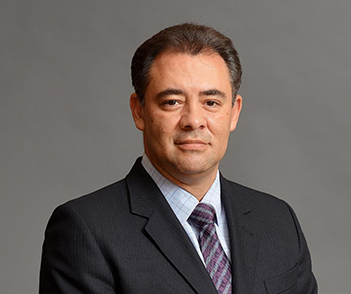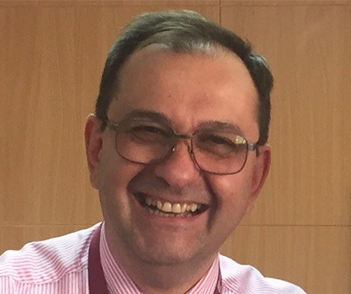Fresenius Medical Care teams throughout Latin America are implementing a range of strategies to improve cardioprotective strategies for patients with chronic kidney disease. Although initiatives vary from country to country, all are focused on developing more personalized and precise treatment options. Specific programs focus on the detection and management of fluid overload, assessment of drug interactions, consideration of home therapies, and thorough evaluation of cardiovascular risk.
Cardiovascular disease is the leading cause of death in individuals with chronic kidney disease (CKD) and is highly prevalent in individuals on maintenance dialysis.1,2,3 Compared to the general population, the relative risk of a cardiovascular-related death is between 10 to 30 times higher in individuals with late-stage CKD.
Many of the people who begin dialysis do so with existing features of hypertension and fluid overload, which are major risk factors for cardiovascular disease.4,5,6 To address this reality, Fresenius Medical Care in 2018 updated its Clinical and Quality Agenda to include cardiovascular health as one of the six core themes guiding the company’s clinical outlook (Figure 1).
FIGURE 1 | Cardiovascular Health is one of the six core themes of the Fresenius Medical Care Clinical and Quality Agenda
With the introduction of cardiovascular health as a core focus area, Medical Office teams throughout the company have begun integrating cardiovascular-related initiatives into clinical services to improve patient outcomes and make care more personalized and precise. While requiring adaptability to local healthcare frameworks and processes, cardiovascular-related strategies are aiding teams across the organization in improving patient care.
LATIN AMERICA
The company’s Latin America region provides a strong example of how taking a more personalized approach to kidney replacement therapy (KRT) can reduce the high incidence of cardiovascular disease and death among individuals with kidney disease.
Fresenius Medical Care in Latin America has programs for advanced CKD prior to dialysis initiation for stage 3b to stage 5 CKD, including the CERCA (Cuidado de la Enfermedad Renal Cronica Avanzada) program in Argentina and the FMEPrever program in Colombia. The strategies implemented to improve cardiovascular health include medication management with prioritization of angiotensin-converting enzyme inhibitors, angiotensin II receptor antagonists, and sodium glucose co-transporter 2 inhibitors. These strategies have demonstrated a positive impact on the reduction of cardiovascular complications, early mortality, disease progression, and improvement in quality of life.
Frequently, individuals with advanced CKD are treated with multiple medications as reflected by the up to 19 to 25 pills taken per day. Polypharmacy and potential drug interactions that compromise cardiac function and/or lead to complex arrhythmias are a significant concern in the late-stage CKD population. In Colombia, the FMEPrever program includes comprehensive medication documentation, assessment of relevant drug interactions, strict pharmacovigilance, and adverse event monitoring related to prescribed medications.
Clinics in Peru and Colombia routinely assess the risk of developing cardiac arrhythmias due to QT interval prolongation based on potential drug-drug interactions at the time of clinic admission.
Among incident patients, the goal is to maintain hourly ultrafiltration rates less than 13 mL/kg/h and prevent intradialytic or post-dialysis hypotension, thus reducing the risk of myocardial, cerebral, and mesenteric ischemic events, myocardial stunning, and cardiac arrhythmias.
Other cardioprotective strategies focus on: appropriate volume management and nutritional optimization at admission; programs such as Hyper-Care in Brazil (daily in-center high-volume hemodiafiltration, or HDF, five to six times weekly); and using serial measurements of body composition from the first week on dialysis (Fresenius BCM™) in Chile, repeating the measurements with four-week intervals for at least the first three months of KRT.
In FME Ecuador, a prescribed sodium dialysate concentration of <138 mmol/L (99 percent of treatments) and an ultrafiltration rate between 10 and 12 mL/kg/h (99 percent of all treatments) have been implemented in addition to body composition monitoring and multidisciplinary support. Patients also undergo an annual mandatory cardiology assessment that includes chest x-ray, electrocardiogram, and echocardiogram, if indicated. By reducing the unnecessary overuse of beta-blockers and antihypertensive medications, a significant reduction of intradialytic hypotension has been observed.7
Peru has developed a robust patient education program that covers important topics such as chronic volume overload and the consequences of high ultrafiltration rates, in order to improve understanding of the effect of fluid overload on cardiovascular health. Training for medical and nursing staff was developed in parallel, aimed at optimizing the management of volume status and the ultrafiltration rate, as well as the proper interpretation of the body composition monitor (BCM) results.
In Brazil, the in-center daily high volume (HV)-HDF protocol includes principal indications for HV-HDF and buttonhole vascular access cannulation to minimize the discomfort of frequent arteriovenous fistula cannulation. Our experience suggests that daily hemodialysis can be a good option for prevalent patients.8
In Argentina, HV-HDF was incorporated into clinical care with a strong implementation program, as HV-HDF may reduce cardiovascular complications. Currently, there are 2,830 patients using this therapy in our dialysis clinics — which represents 31.6 percent of those on hemodialysis — with excellent results and a significant reduction in mortality (Figures 2 and 3).
FIGURE 2 | Number of patients on HV-HDF in Fresenius Medical Care Argentina over time
FIGURE 3 | Hemodiafilitation in Argentina demonstrated improved survival for patients
CONCLUSION
Cardiovascular disease poses significant risks for patients with CKD. Addressing these risks using a multidisciplinary clinical team and patient education approach and making care more personalized and precise could help lower the incidence of cardiovascular events among patients with kidney disease. Specific cardiovascular-related care strategies include thorough cardiac screening and risk assessment, evaluation of individual lifestyle factors, consideration of various treatment options such as home-based therapies, and ongoing management of dialysis complications. Detecting and controlling fluid overload, hypertension, cardiac arrhythmias, cardiac remodeling, and vascular calcification can likewise significantly improve cardiovascular health.
Meet The Experts
References
- Rayner HC, Pisoni RL, Bommer J, et al. Mortality and hospitalization in haemodialysis patients in five European countries: results from the Dialysis Outcomes and Practice Patterns Study (DOPPS). Nephrol Dial Transplant 2004;19(1):108-20. doi:10.1093/ndt/gfg483.
- United States Renal Data System. “Mortality,” chap. 5, vol. 2, 2018 annual data report, https://www.usrds.org/2018/download/v2_c05_Mortality_18_usrds.pdf.
- Cozzolino M, Mangano M, Stucchi A, et al. Cardiovascular disease in dialysis patients. Nephrol Dial Transplant 2018;33(Suppl 3):iii28-iii34. doi:10.1093/ndt/gfy174.
- Vrtovsnik F, Verger C, Van Biesen W, et al. The impact of volume overload on technique failure in incident peritoneal dialysis patients. Clin Kidney J 2019;14(2):570-77. doi.org/10.1093/ckj/sfz175.
- Banerjee D, Ma JZ, Collins AJ, Herzog CA. Long-term survival of incident hemodialysis patients who are hospitalized for congestive heart failure, pulmonary edema, or fluid overload. Clin J Am Soc Nephrol 2007;2(6):1186-90. doi:10.2215/CJN.01110307.
- Sarafidis PA, Persu A, Agarwal R, et al. Hypertension in dialysis patients: a consensus document by the European Renal and Cardiovascular Medicine (EURECA-m) working group of the European Renal Association-European Dialysis and Transplant Association (ERA-EDTA) and the Hypertension and the Kidney working group of the European Society of Hypertension (ESH). Nephrol Dial Transplant 2017;32(4):620-40. doi:10.1093/ndt/gfw433.
- Unpublished data NephroCare Ecuador showed a significant decrease from 2019: 1317 events vs. 2020: 801 hypotensive events.
- Barra ABL, Roque-da-Silva AP, Vasconcellos MS, et al. Association between extracellular volume control and survival in patients on short daily haemodialysis. BMC Nephrol 2020;21(1):153. doi:10.1186/s12882-020-01821-w.


